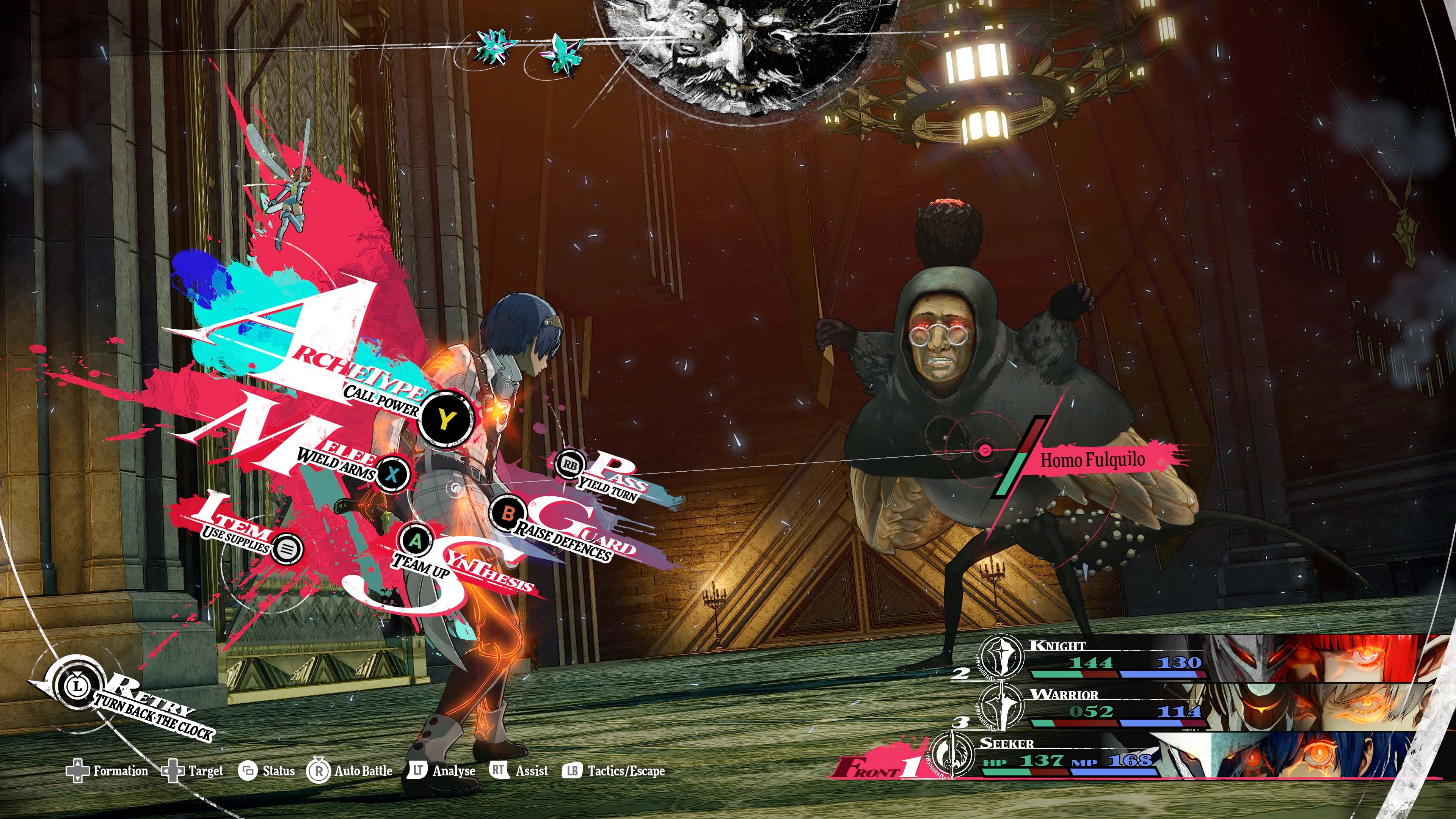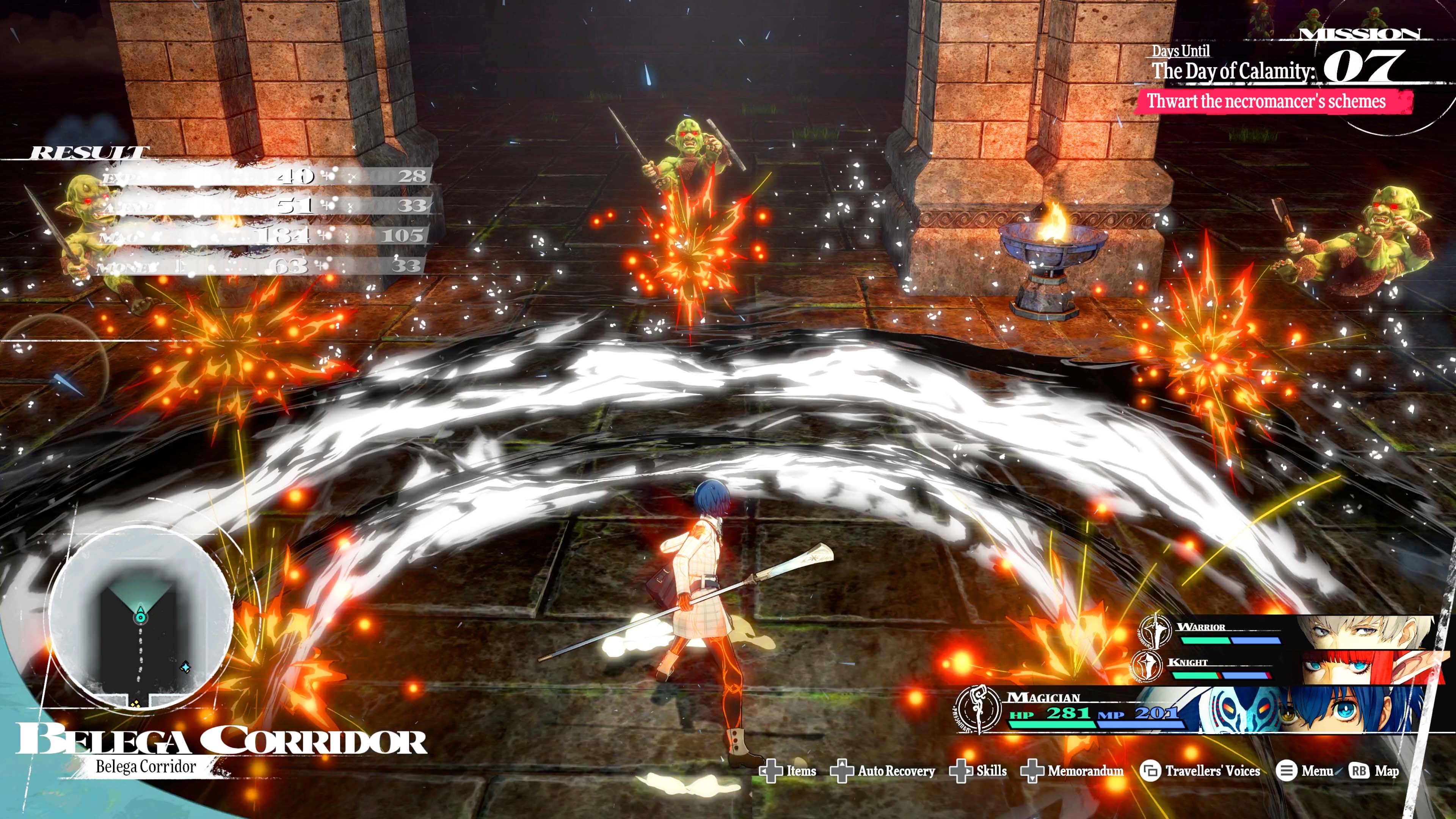Review info
Platform reviewed: PS5
Available on: PS5, PS4, Xbox Series X|S, PC
Release date: October 11, 2024
Shin Megami Tensei and Persona series developer Atlus is back with its first original franchise in years in the form of Metaphor: ReFantazio. This new game trades in the modern-day Japan backdrop for a decidedly dark fantasy setting – something we haven’t really seen from Atlus since the Etrian Odyssey series.
However, Metaphor’s take on fantasy is remarkably different from its peers – and it’s highly ambitious. The game presents a world racked by discrimination and a broken class system in which church and state very much operate hand in hand. It explores how peoples’ fear and anxiety can be weaponized against them – and how that can cause people to confidently act against their own best interests time and again.
This – paired with an evolution of Atlus’s challenging ‘press turn’ battle system that merges the best elements of the developer’s other franchises – makes for a constantly engaging role-playing game (RPG) that never once grew stale across its mammoth 80-hour runtime. With all that said, Metaphor: ReFantazio is easily the best RPG of the year, one of Atlus’s best games to date, and shouldn’t be missed whether you’re familiar with the developer’s back catalog or not.
Fight for your right
Table of Contents
Metaphor: ReFantazio’s world is inhabited by numerous humanoid tribes, each with their own defining features such as horns, wings, or facial markings. Most of the tribes tend to keep to themselves, with rarely a nice thing to say about one another. Most have also fallen into the teaching of the Sanctist Church, which also acts as the world’s primary governing body.
Our protagonist hails from the eldan tribe, a near-extinct race defined by the fact that they have no, well, defining physical features at all. They are the closest to resembling real-world humans and thus are the most shunned of all of Metaphor’s societies. What the game refers to as ‘humans’ are instead towering, demonic monstrosities that roam the land, terrorizing countryside and communities both. You can see a bit of meta-commentary starting to form there, then, but to divulge more here would be to encroach on spoiler territory.
The story in Metaphor begins as the world is thrust into a rite of royal succession. The culprit is a high-ranking military man known as Count Louis. After assassinating the king in cold blood and placing a curse on the prince that puts him into a coma, we, as the prince’s aide, are tasked with bringing the Count to justice. However, that’s much easier said than done; while the populace knows Count Louis to be the culprit, discontent with the royal family and the Sanctist Church have made him a popular figure and thus a frontrunner to succeed the throne.
Best bit

The battle system in Metaphor: ReFantazio is its crown jewel. Archetypes are a phenomenal evolution of both Personas and Shin Megami Tensei’s highly customizable demon builds. Being encouraged to change up your party and archetype composition between quests and dungeons means you’ll constantly have your thinking cap on when it comes to clearing content as efficiently as possible.
Much of Metaphor’s narrative revolves around the ‘Tournament for the Throne’- a contest set into motion by the deceased king. It’s here where our protagonist and his band of comrades must make a name for themselves in order to be considered worthy of Louis’ attention.
It’s an eclectic and diverse bunch, too. There’s Strohl – a nobleman’s son bent on killing Louis after razing his village to the ground – as well as Hulkenberg, a decorated royal knight who blames herself for being unable to protect the family in her charge. And that’s just the first two party members; the rest each have their own vibrant personalities, motivations and backgrounds that are equally rich and tragic. I’m also a huge fan of the wide variety of British accents used in the game’s English dub, ranging from East London ‘cockney’ and Welsh to Irish and Liverpudlian.
Overall, Metaphor: ReFantazio presents a constantly gripping story that I found incredibly difficult to step away from. It’s a veritable virtual page-turner where I often found myself playing into the wee hours of the night just to unfurl the next chain of unpredictable events.
Royal beggars

The flow of gameplay in Metaphor: ReFantazio feels like a broad mixture of systems from other Atlus games. Like the Persona series, Metaphor features a calendar, but it only covers about four months as opposed to a year. The tradeoff there, then, is that you’re not attending school in Metaphor, and therefore there’s more you can do in a single day. Days are broadly split into two halves; day and night. Performing an activity consumes one of these halves, unless you’re exploring a dungeon, which will take up the whole day.
Metaphor repurposes Persona’s social link system as ‘Followers.’ There are 14 of these that’ll gradually unlock over the course of the game, and includes your party members and non-player characters (NPCs) that play a key role in the narrative. Improving your standing with your followers is crucial, as you can unlock various benefits such as increased battle experience, cheaper rates at shops, and new Archetypes to take into combat (more on those later).
You’ll also have opportunities to perform activities that increase the protagonist’s five Royal Virtues. These are Courage, Wisdom, Tolerance, Eloquence and Imagination, and upgrading them is essential to unlocking further bonuses with your Followers. My tip would be to spend your free days improving these, if you don’t have any dungeons to explore or present Follower conversations to see to.
Tasks like these will most often be done in the days you have before a plot-crucial deadline, which usually comes in the form of clearing one of the game’s major dungeons. I often found myself planning out my days in advance, and there’s a great deal of satisfaction in clearing up your to-do list with enough time to spare.
What’s your Archetype?

Metaphor: ReFantazio employs Atlus’s ‘press turn’ style of battle system most commonly found in the Shin Megami Tensei series. Essentially, on your turn, you’ll have up to four actions based on the number of characters in your party. By attacking, guarding, or using an item, you’ll consume one of these actions by default. However, hitting an enemy’s elemental weakness (or passing a character’s action onto another) will only consume ‘half’ of it, thus increasing the number of actions you can perform in a whole turn. On the other hand, if an enemy dodges, blocks or repels your attacks, you’ll lose precious actions or possibly even your whole turn.
As a result, battles will typically either be a resounding success or a crushing disaster. Mercifully, Atlus has thrown in some lifelines this time. You can choose to restart a battle at any time (with enemy weakness and resistance analysis carrying over), and the game isn’t instantly over if the protagonist dies in battle.
The real genius of Metaphor’s battle system, though, is Archetypes, which feel more like traditional RPG classes that each bring their own sets of skills and abilities.These are Persona-esque summoned entities in appearance, but they really feel more like Shin Megami Tensei’s demons, with all the customizability and player expression those bring.
Also, there are zero restrictions on party members equipping different Archetypes. Unlike Persona, it’s not just the protagonist that gets free reign. As a result, different quests and dungeons will typically require you to change up your party and Archetype composition each time. For example, some enemies may be susceptible to a specific element, encouraging you to bring along magic casters. Others, rather humorously, might be enraged if they so much as see a staff, implying you should bring along a number of melee-based Archetypes.

Now, party members do have base stats to consider. Hulkenberg has high Endurance by default, making her excel with tankier Archetypes like the Knight or the Brawler. Heismay (a former knight hailing from the mouse-like eugief tribe) is physically weaker but has naturally high Agility, meaning Thief and Gunner Archetypes are perfect for him. Strohl is something of an all-rounder, making him handy for trying out specialist Archetypes like Merchant (which has attacks that literally cost money) and Faker (which specializes in applying debuffs to enemies).
Archetypes also have some leeway in which skills they can equip with up to four free slots with which they can inherit skills from others. This means that you can carry over skills that you regularly rely on should a quest or dungeon require you to change up your Archetypes. Each also has its own set of resistances and elemental weaknesses, which you’ll need to take into account to avoid enemies getting too much of an advantage.
To summarize, I think this is Atlus’s most rich and in-depth battle system to date. You simply can’t plow through the entire game relying on the same handful of Archetypes; you’re constantly asked to adapt to the situation at hand. This means you’ll get plenty of use out of every party member (there’s little room for choosing favorites here), and discovering which Archetypes are best suited to each – not to mention unlocking more powerful versions of them – is an adventure in itself.
Delightfully dystopian

While not the most visually stunning game on the market, Metaphor: ReFantazio nonetheless sells its setting with incredible art direction. The brutalist architecture of the royal capital of Grand Trad is striking, as are its dingy alleyways where the least fortunate in society congregate. Even in more seemingly well-to-do areas like the castle town of Martira or the port of Brilehaven feel like they’re subtly stagnating, helped in part by the deliberately drab color palette that goes a long way to sell the grim fantasy setting. It’s certainly Atlus’s grittiest-feeling game – probably since the PlayStation 2’s Digital Devil Saga.
The game’s soundtrack is also a highlight with renowned composer Shoji Meguro returning for the score. Here, he trades in the infectious pop beats of Persona and the grimy rock sound of earlier Shin Megami Tensei games for something more orchestral and offbeat. The battle themes are the crowning achievement here, for sure; while they took some time to grow on me, the fast-paced, almost overbearing chanting really helps drive battles forward.
Unfortunately there are some performance issues that Atlus should look to iron out with future updates. Atlus targets 60 frames per second (fps) here, but it can chug as low as 30fps in busier city areas and when traveling between zones. It does hold up better in battles and in dungeons, but overall performance is currently a blemish on an otherwise pristine package.
Accessibility
Metaphor: ReFantazio has no dedicated accessibility features, though it does have a robust difficulty selection for those who want to tailor their experience. Players can also choose to enable a network function that shows how others spend their in-game days, offering a handy bit of guidance in case you’re torn between multiple choices.
Play it if…
Don’t play it if…
My full playthrough from start to credits for Metaphor: ReFantazio lasted around 85 hours on the Normal difficulty setting. During this time, I was able to max out all Follower ranks, unlock most Archetypes and complete most side quests in addition to completing the main story.
Being a fan of the RPG genre and having played almost all major Atlus releases since the PS2’s Shin Megami Tensei 3: Nocturne, I’ve been able to experience the developer’s growth of its turn-based battle systems and storytelling over the years. With Metaphor: ReFantazio, I found a relatively much more mature story and arguably its most refined battle system to date.
I played through the game on PS5 on an LG CX OLED TV, using a DualSense Edge controller, occasionally playing with a JBL Quantum 910P gaming headset which really helped the game’s soundtrack to pop.
First reviewed October 2024.

























